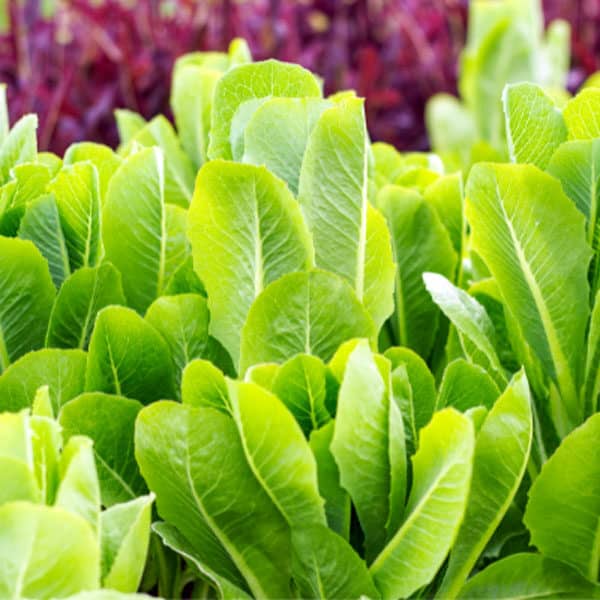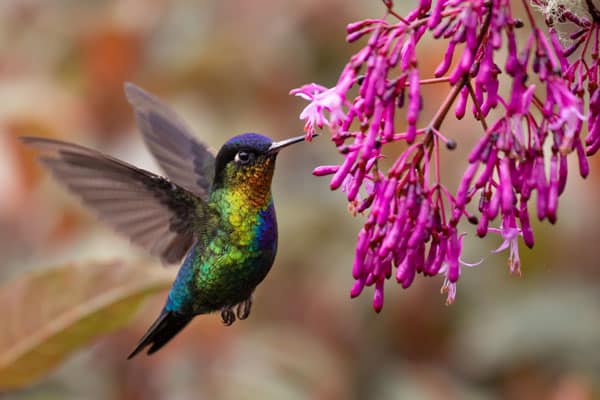This post may include affiliate links.
If you make a purchase, I'll earn a small fee at no extra cost to you.
It’s easy to start a vegetable garden on a budget. These easy tips will help you grow your own food for less!
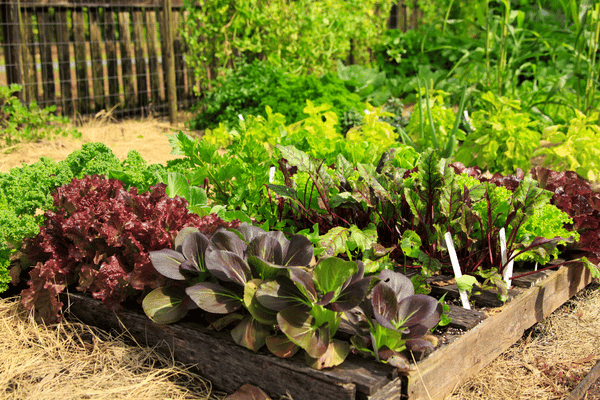
Most vegetable gardeners get started because they want food that’s healthier and more delicious – and maybe even to save on their grocery bill. But it’s easy to get caught up in all the “must-have” gardening gadgets that can really break the bank.
You might be surprised just how much money you can save with a budget-friendly vegetable garden. And it’s easier than you think!
Before we dig into budget-friendly garden ideas, keep in mind one of the best benefits of growing vegetables: you’re producing your own food! Fruits and veggies are one of the healthiest ways to feed your family, but fresh produce can really eat into the grocery budget.
Are you a brand new gardener? Not sure what to plant or when to plant it? I can help.
You’ll find lots of great information in my new book, The First-Time Gardener: Container Food Gardening.
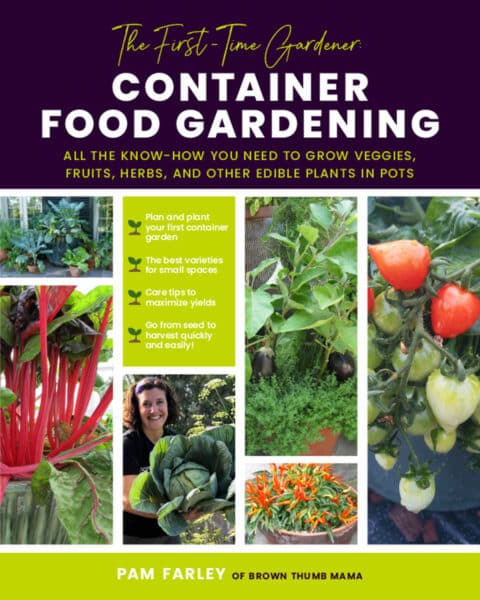
Growing your own food can save you tons of money, which can more than make up for any gardening expenses that come up along the way. Here are some of my favorite ideas for vegetable gardening on a budget:
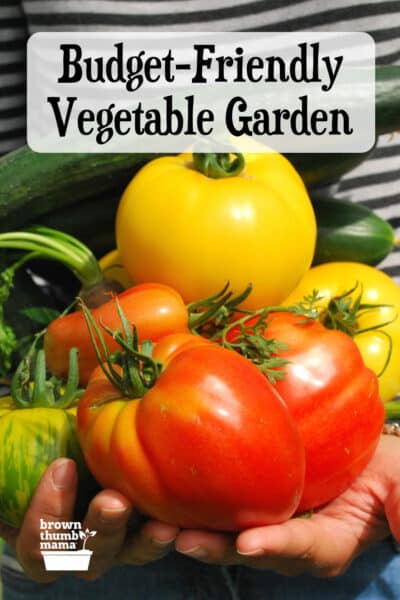
1. Start Your Garden For Less
If you’re just at the beginning of your vegetable gardening journey, it’s a great time to plan for low-cost gardening from the start. Planning and prepping are your #1 tips for cheap gardening. Here are a few basics that will help you start a successful budget-friendly garden:
- Make sure to place your garden in full sun (at least 6 hours of sunlight per day). Most vegetables need a good amount of sun to stay healthy and produce a good harvest. A nice, sunny garden location will prevent a lot of problems down the road.
- Prepare the soil. What you do before planting is important! Clear all grass, weeds, and debris from the area. Add about an inch of compost to the garden space and then till the soil well. Now your soil is ready for planting.
- Cover the garden space with mulch after tilling (here are the best natural, economical mulches). This protects the soil from weeds right away so they won’t be a problem when you’re planting.
- If you’re container gardening or growing in a raised bed, make sure to have all your containers set up with loose, rich soil and proper drainage.
Another important part of planning is understanding the microclimates in your vegetable garden. Planting in the right microclimates can increase your yield and decrease the amount of time, money, and energy you put into upkeep.

2. Choose the Cheapest Vegetables to Grow
Some vegetables are more labor- or budget-intensive to grow. Choose the cheapest and easiest veggies if you really need to stick to a firm budget. Some of the cheapest vegetables to grow include:
- Tomatoes
- Winter squash
- Lettuce
- Garlic
- Bell peppers
- Broccoli
- Green beans
- Carrots
3. Upcycled + Repurposed Garden Containers
Repurposing old containers as garden pots is not only budget-friendly, it’s environmentally-friendly too. They can also give your garden a one-of-a-kind, eclectic look.
You can find good, budget-friendly containers at flea markets, yard sales, and estate sales. Sometimes you’ll even find them given away for free when someone cleans out an attic, garage, or shed.
When upcycling containers, always choose items that are food-safe. For example, the utility buckets at the hardware store and buckets that held swimming pool chlorine are not safe for planting! But you can always use these containers as a decorative pot and place a safe container inside.
Here are a few of my favorite ideas for upcycled vegetable garden containers:
- Pails and buckets
- Wash basins (wooden or metal)
- Vintage tool boxes
- Cast iron bath tubs
- Large wooden drawers from an old dresser
- Wooden crates
- Wheelbarrows
- Wooden storage chests
- Old travel trunks and luggage
- Trash cans or waste bins
- Large cookpots and other large pieces of cookware or bakeware
- Vintage coolers
Want to learn more about container gardening? Read about which vegetables work best in containers.
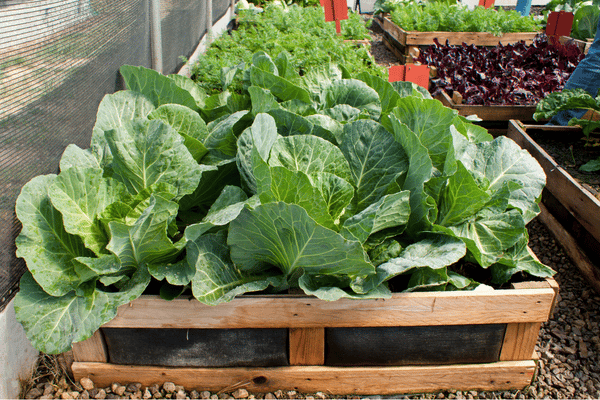
4. Repurposed Plant Supports
There are so many handy plant supports you can buy, but the cost will add up quickly. I always recommend finding easy ways to repurpose old items as plant supports. Here are some creative items you can use for plant supports:
- Old folding ladders (great for tomato cages!)
- Wooden pallets (lean them on a wall – or against each other tied with twine)
- Old PVC pipe can be attached together to make a trellis, cage, or stake support
- Sticks and branches around the yard can be used to make a tripod garden support (willow branches work really well for this)
- Grow vertical vegetables up an existing fence. My great-uncle grew string beans along his entire backyard fence!
Tip: you can use old fabric strips as garden ties. Zip-ties work well, too.
Are your seeds still good?
Most vegetable and herb seeds will be viable for many years, but some need to be replaced every year. Get your free Seed Viability Chart here!
5. Grow Your Own Plant Supports
Bamboo canes make great plant supports and garden barriers. They’re not too expensive to buy, but if you’re a serious gardener, those purchases can still add up! Did you know you can actually grow your own bamboo?
Bamboo grows lightning fast and requires little care. It spreads quickly, so you’ll either want to plant it in a container or be diligent about removing new plants as they spread.
Once your bamboo plants are big enough for your garden needs, use a good pair of garden shears or a small hand saw to harvest canes as needed. Then you can use the stalks as garden stakes or build trellises or cages for your vegetable plants.
6. Make Your Own Compost
It’s important to feed your garden well to ensure healthy plants and a good harvest. If you try to purchase all the nutrients your plants need, it can be expensive!
Making your own compost is easy and practically free–no special equipment required. It’s a great way to keep your kitchen scraps, grass clippings, and other yard waste out of the landfill while improving soil fertility. This means stronger plants and a better harvest.
Learn how to make your own compost–it’s easy and doesn’t smell!
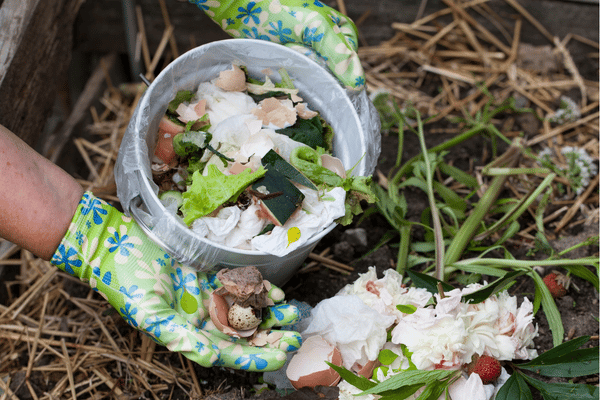
7. Cheap Ways to Start Seeds
Many seeds can be directly planted into the soil, but some need to be grown indoors first and then planted as transplants. There are a ton of store bought systems for starting seeds, but they can be expensive and wasteful.
Quality seeds and soil are a must for starting your seeds, but pricey systems aren’t necessary. Here are some clever and cheap tips for starting seeds instead:
- Keep your seeds in the warmest spot in your home. This eliminates the need for heating pads and other devices.
- Don’t worry too much about lighting. There’s no need for fancy, expensive lights for your seedlings. A well lit window and a cheap shop lamp (or really any bright lamp) is good enough.
- Skip the expensive humidity domes. You can use any kind of clear covering that you already have on hand, like Tupperware or plastic drawers or storage containers. Glass or plastic works just fine.
- Repurpose materials to use for seed containers. All you need to do is poke holes in the bottom of containers for drainage. Try any of these: egg cartons, egg shells, toilet paper or paper towel rolls cut to size, cardboard milk and juice containers, or newspaper.
8. Seed Swap
Frugal gardeners live to swap. If you have an oversupply of carrot seeds this season or started too many tomato seeds indoors–well, it’s time for a trade! This way everyone benefits from having access to a variety of plants without spending extra money.
Vegetable gardeners can find seed and plant swaps at local farmer’s markets or gardening groups. You can search online for seed swapping groups too. It’s quite likely there’s a Facebook group for garden swapping in your area.
9. Use Space Wisely
Plan your garden space for optimal return: choose the plants with the greatest yield for the space they take up.
For example: artichokes are beautiful and easy to grow. But they take up a lot of space, and you usually only get one or two artichokes per plant. If you have a smaller garden space, it’s better to plant an assortment of vegetables instead of one single artichoke.
10. Use DIY Garden Sprays
There are just about a million commercial sprays to help you control weeds and pests in your vegetable garden – even some wonderful non-toxic and all-natural options. But even natural garden sprays can be expensive! The most economical choice is to make your own.
For controlling weeds, I can’t say enough about my DIY weed killer spray recipe.
For pest control, these are my favorite garden sprays to protect against infestations:
DIY Insecticidal Soap Spray
- Add 1 teaspoon dish soap and 1 teaspoon vegetable oil to a 16-oz spray bottle.
- Fill the rest with plain water (leave enough room at the top to shake the mix together).
- Shake gently and spray plants as needed, focusing mainly on the leaves, branches, and stems.
DIY Coffee Ground Spray
- Boil 2 tablespoons of coffee grounds in 2 cups of water.
- Cool until mixture is room temperature.
- Strain the grounds from the liquid and pour into a 16-oz spray bottle.
- Shake gently and spray plants as needed, focusing mainly on the leaves, branches, and stems.
Bonus Tip: Plant at the Right Time
Knowing which vegetables to plant in each growing season ensures your plants will thrive and give you a great harvest. Check out my Vegetable Garden Planting Schedules so you know exactly what to plant each month of the year.

Have you tried any of these tips before? Which ideas will you try next? Leave a comment below to share your thoughts!


